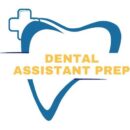Understanding DANB exam scoring is crucial for your dental assisting certification journey.
- Essential DANB Scoring Insight: Grasp how your dental assisting expertise is measured.
- Evaluation System: Uncover the scale and implications of your test score.
- Passing the DANB Exam: Learn the benchmarks for launching your professional dental career.
Navigate DANB exam scoring with confidence for a successful career in dental assisting.
Introduction to the DANB Exam
The Dental Assisting National Board sets the standard for excellence in the dental assisting profession. By developing and administering credentialing exams, it helps to ensure that dental assistants are qualified to uphold high levels of patient care.
What Is the DANB?
The DANB is an independent, non-profit organization responsible for the national certification of dental assistants. It is the only organization that offers nationally recognized credentials to dental assistants across the United States. Becoming certified through DANB is a testament to a dental assistant’s knowledge and skills, signifying a commitment to professional development and the delivery of quality dental care.
Importance of Certification
Obtaining certification from the DANB can open doors to new job opportunities, potentially higher pay, and greater job satisfaction. Certification indicates a level of competence and knowledge that employers trust and value. In certain states, DANB certification is a regulatory requirement for performing specific functions within a dental office.
Overview of DANB Exams
The DANB offers a variety of exams tailored to different areas of dental assisting expertise. A deep understanding of these exams can help candidates to prepare effectively and optimize their career trajectory within dental health care.
Types of DANB Exams
Several exams offered by the DANB cater to specialized functions within dental assisting:
- Certified Dental Assistant (CDA): The CDA exam is a general certification that covers various aspects of dental assisting.
- Certified Orthodontic Assistant (COA): This exam focuses on orthodontic assisting tasks.
- Certified Preventive Functions Dental Assistant (CPFDA): Specific preventive dental care tasks are the focus of this exam.
- Certified Restorative Functions Dental Assistant (CRFDA): This exam concentrates on restorative dental procedures.
Each certification exam evaluates a candidate’s proficiency based on standardized testing methods and industry-specific knowledge.
Career Advancements
Certification through the DANB can be a significant stepping stone towards higher positions within a dental practice. Certified dental assistants may find themselves in roles that involve more responsibility, such as office management or specialized clinical duties.
The Scoring Scale
Every aspirant preparing for a DANB exam needs to grasp the scoring methodology, as it’s fundamental to understanding how examination performance is measured.
Understanding the Scale
The DANB scoring system uses scaled scores to ensure consistency across different exam forms and sessions. Performance is not about answering a certain percentage of questions correctly but about meeting or exceeding the standard of knowledge and competence represented by the pass mark.
Pass/Fail Marks
Typically, the minimum score required to pass DANB exams like the Radiation Health and Safety (RHS) exam is set at 400. Scaled scores range above and below this point, indicating different levels of performance.
Interpretation of Scores
- Below 400: signifies that the candidate has not met the required competence level to pass.
- At or above 400: indicates the candidate has reached the baseline of knowledge and skill expected of a certified dental assistant in that subject matter area.
The Role of a Standardized Scoring System
A standardized scoring system is integral to fair and objective assessment of candidates’ knowledge and skills.
Purpose of Standardization
The standardized scoring approach mitigates the variability that can arise from different exam versions and administrative conditions.
Fairness in Evaluation
This impartiality is crucial in a profession where patient safety and ethical standards are at stake.
Understanding Raw Scores vs. Scaled Scores
Distinct from a simple tally of correctly answered questions, the DANB exams incorporate a conversion from raw scores to scaled scores to equate varying levels of difficulty across different test forms.
Raw Scores Defined
A raw score is the total count of questions a test-taker has answered correctly. It’s the most straightforward way to gauge performance but doesn’t account for differences in the complexity of test questions or forms.
Scaled Scores Explained
Scaled scores transform the raw score into a standard reporting scale. This conversion process ensures a comparability of scores, where a score on one form of the exam has the same meaning as the same score on another form of the exam, despite variations in difficulty.
The Conversion Process
The process of converting raw scores to scaled scores involves a statistical adjustment called equating. This takes into account the difficulty of the specific set of questions encountered by the test-taker, in comparison to the difficulty of the questions on a reference version of the exam.
- Raw Score Calculation: The number of questions answered correctly is tallied up.
- Reporting the Scaled Score: The adjusted score is then reported on a scale that reflects competency relative to the pass/fail benchmark.
Understanding the nuances between raw and scaled scores can demystify the scoring system and help candidates set realistic expectations for their performance on the DANB exams.
The Significance of Cut Scores
When taking the DANB exam, understanding the concept of cut scores is essential in recognizing how the pass/fail status is determined.
What Are Cut Scores?
Cut scores, also known as passing scores, are the threshold marks that delineate the minimum level of competency needed to pass the DANB exams.
The Process of Setting Cut Scores
The procedure for setting cut scores involves panels of experts who undergo a standard-setting study, deliberating on what defines a minimally competent candidate.
- Item Review: Each exam question is evaluated for its difficulty and relevance.
- Standard-setting Workshop: Subject matter experts discuss and determine the adequacy of each question for assessing minimum competence.
Role in Assessing Competence
- Benchmark for Proficiency: Cut scores act as the benchmark separating individuals who have the basic skills and knowledge necessary to perform effectively from those who do not.
- Maintaining Industry Standards: They uphold the integrity and professional standards of the dental assisting profession by ensuring only qualified individuals are certified.
Score Reporting
Upon completion of a DANB exam, candidates are rapidly informed of their results.
When and How Scores Are Delivered
According to the DANB’s official procedures, candidates are emailed their results within one to three business days after the exam.
Score Validity and Retake Policies
DANB provides clear guidance on score validity.
- Score Validity: Scores have a specific validity period within which they can be used for certification purposes.
How to Interpret Your Score Report
A deeper comprehension of the score report can demystify questions about scoring and help in planning either continuing education or retake strategies.
Components of the Score Report
Understanding each part of the score report is pivotal in assessing performance:
- Scaled Score: An indication of overall performance, presented on a standardized scale.
- Performance by Area: Insight into strengths and weaknesses across various domains of the exam.
Analyzing Report Details
- Identify Areas for Improvement: If retesting is necessary, focus your studies on weaker areas.
- Acknowledge Strengths: Reinforce what you’re already doing well for continued success and confidence in your role.
Frequently Asked Questions About DANB Scoring
This section addresses some common queries regarding DANB exam scoring, designed to clarify any lingering doubts and help candidates navigate the examination process with ease.
How Can I Retake the DANB Exam If I Fail?
- Immediate Action: Reach out to DANB for guidance on retake intervals and procedures.
- Preparation Adjustments: Strategize your study plan based on the feedback from your score report.
How Can I Improve My Score?
- Focused Studies: Dedicate more time to areas identified as weak in your score report.
- Practice Exams: Taking practice tests can familiarize you with the exam format and question types.
What Is a Good Score on the DANB Exam?
- Passing Criteria: A good score is one that meets or exceeds the cut score for the exam. DANB defines this as a scaled score of 400 or higher.
- Above Baseline: Scores above the cut score demonstrate a higher competency level and deeper understanding of the subject matter.
Conclusion: Next Steps After Receiving Your DANB Score
Once your DANB score is in hand, the pathway forward will vary depending on the results. Pass or fail, your response to the score should involve strategic planning for your career or retake efforts.
For Those Who Passed
- Celebrate Your Success: Acknowledging your hard work is important.
- Plan Your Career Path: Consider how this certification can open doors to new opportunities and higher responsibilities within dental practice.
For Those Who Need to Retake
- Reflect and Regroup: Assess the areas needing improvement and adjust your preparation techniques.
- Reschedule Wisely: Give yourself adequate time to study before retaking the exam to maximize your chances of success.
Advancing Your Career
Whether you’re celebrating a pass or gearing up for a retake, this milestone is a stepping stone in your dental assisting journey. Use the results as a catalyst for further education, skill development, and ultimately, the rewarding patient care that lies at the heart of the profession.

